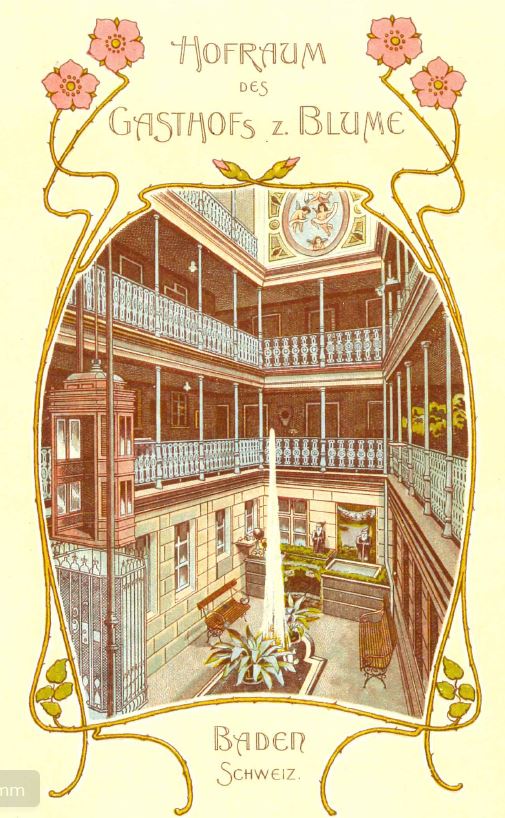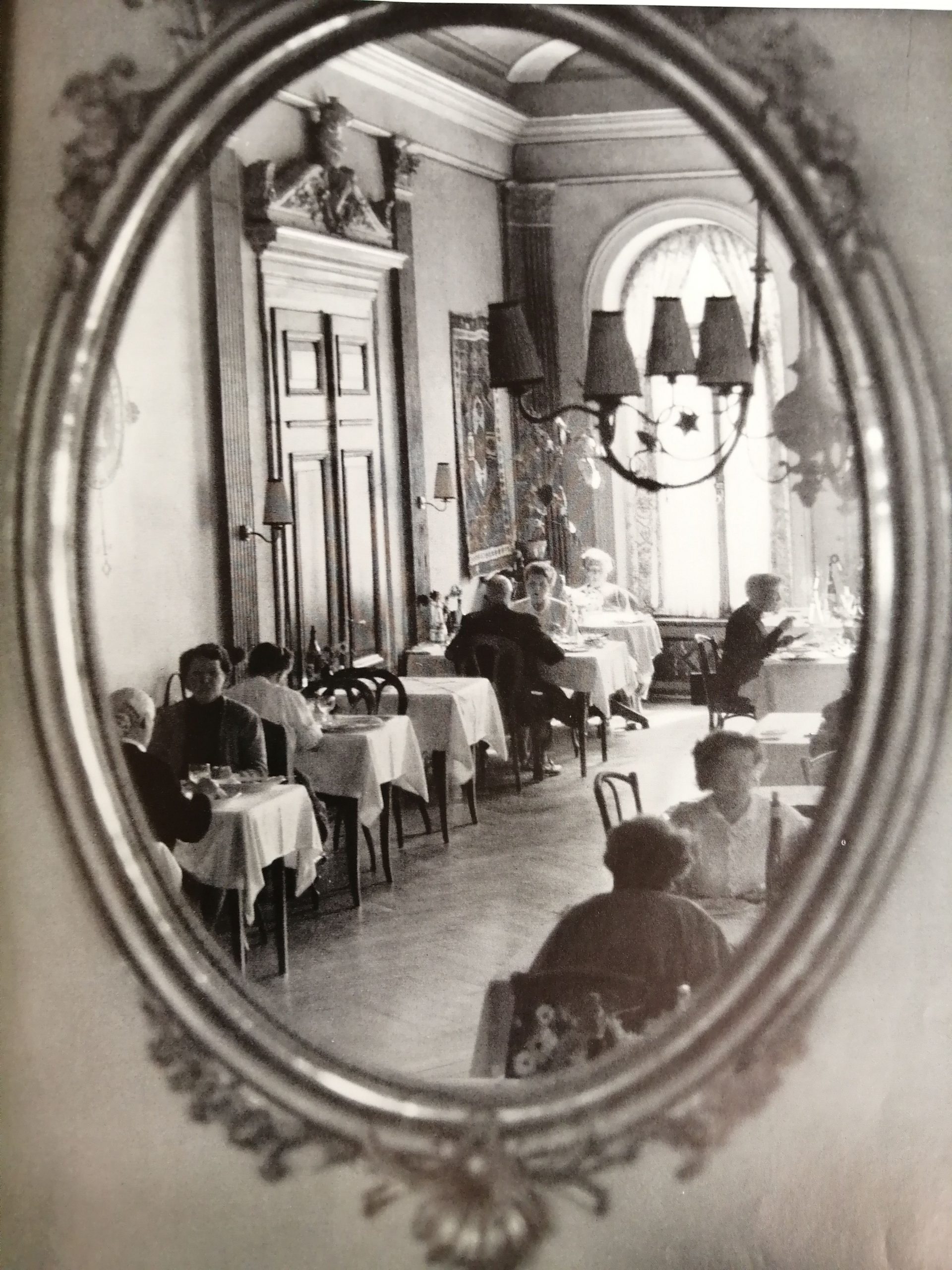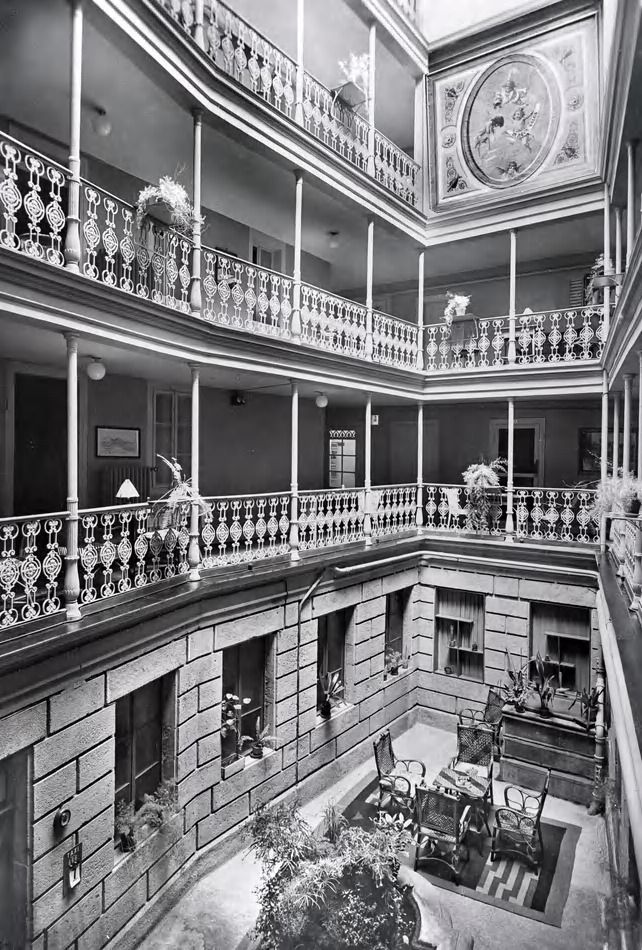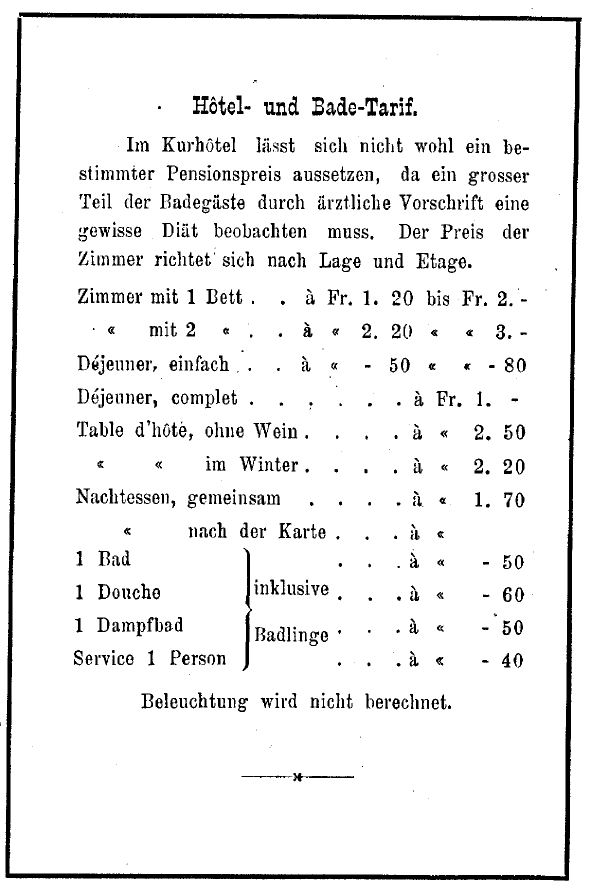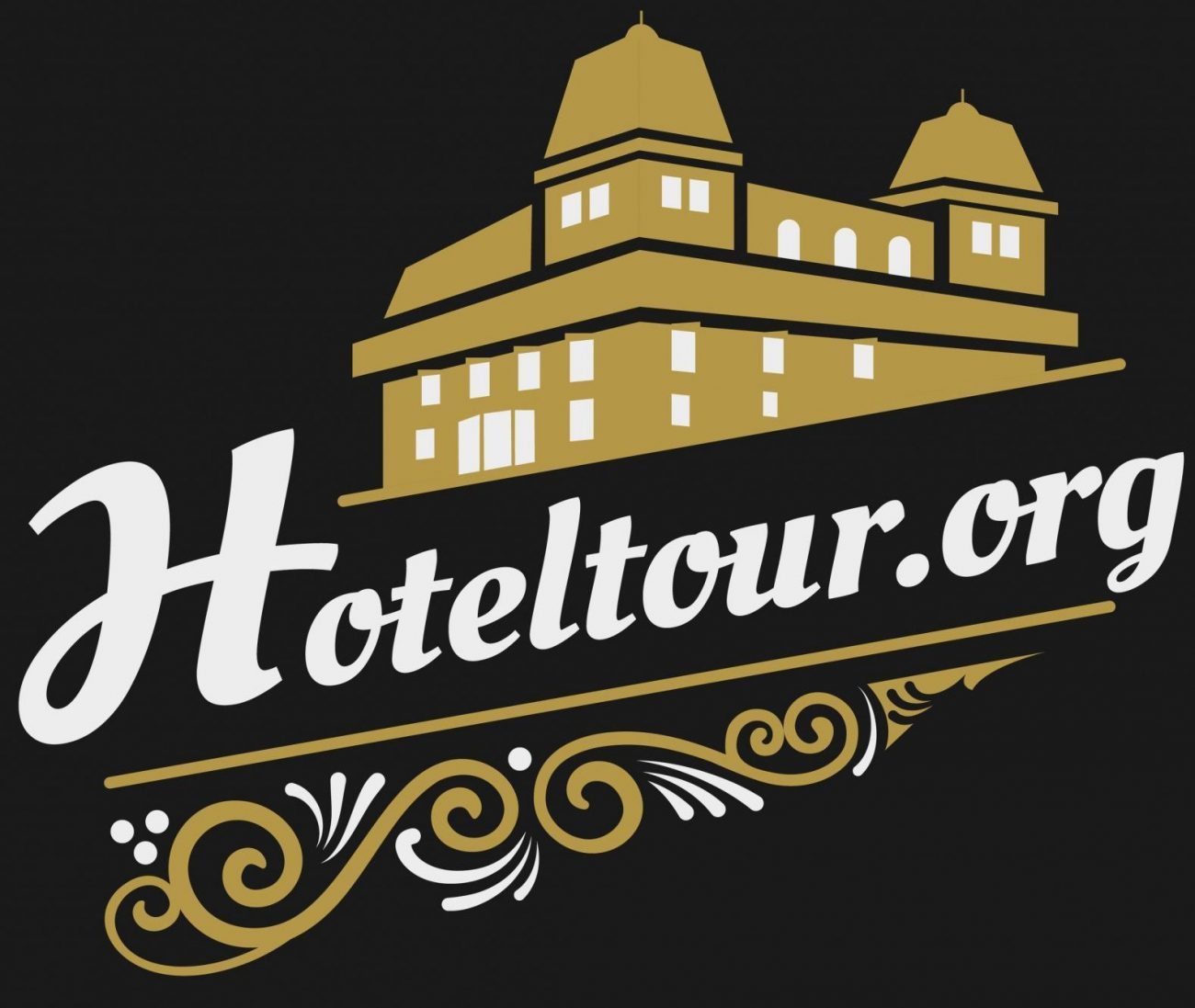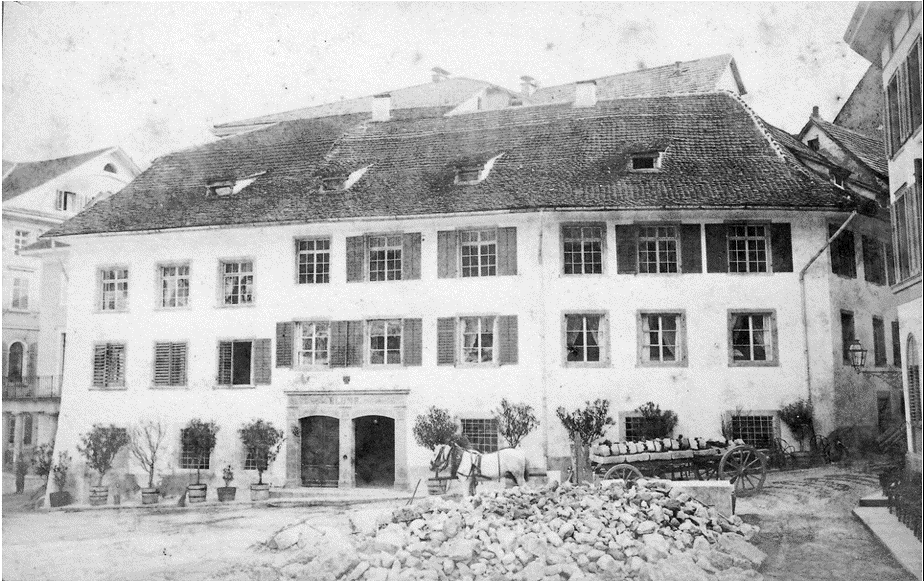
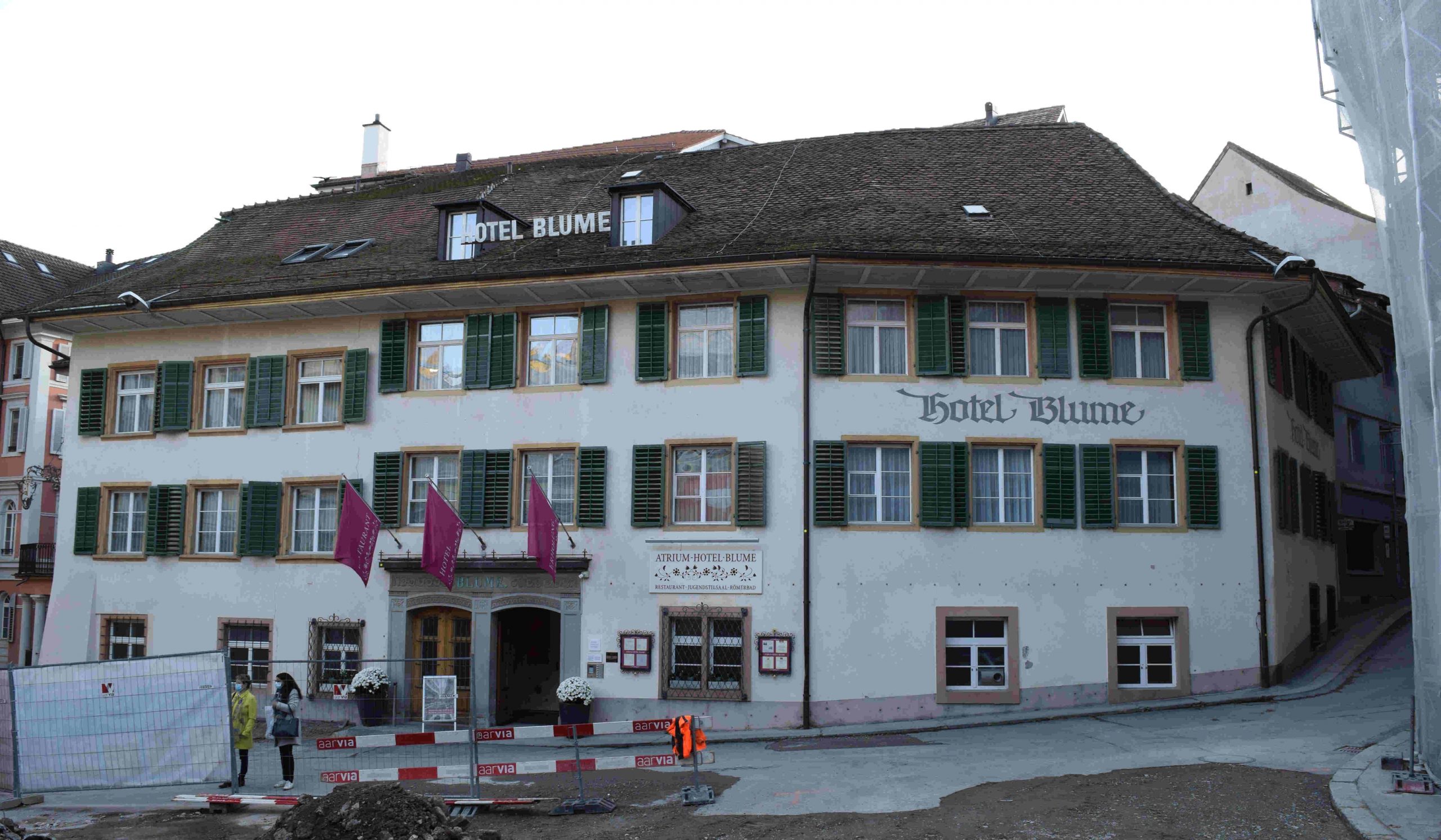
Building site 1863 an building site 2020 – the oldest photograph of the Blume.
The present Hotel Blume was first mentioned in 1421. The Blume has been welcoming spa and bathing guests for more than 600 years. We owe the first detailed description of the house and the bathing establishment to the Basel humanist Heinrich Pantaleon. In his Baden text of 1578 he described the Blume as “a pleasant Inn”.
More information
The first existing mention of the Blume comes from a document dated 18 July 1421, when the bathkeeper of the time, Bernhart Dörflinger, wanted to enlarge and deepen his two existing thermal baths. This project led to the first surviving dispute about the thermal water of the spring of the Großer Heisser Stein (Big Stone). Other owners mentioned over the centuries are the merchant family Feierabend, the Brunner family and the Diebolds. In 1800 the house passed onto Anton Niklaus Borsinger. The Borsinger family shaped the further history of the house over four generations. They commissioned the Baden architect Robert Moser to construct a partially new building and to roof the inner courtyard. The elegant atrium and dining hall were thus created in 1872/1873. The building has not fundamentally changed since then.
The brothers Silvio and Patrik Erne grew up in the Blume and are the second generation Erne running the Hotel Blume since 2002. Their parents, Heidi and Johann Rudolf Erne, took over the hotel in 1972/1973, at which time the Blume was purely a spa and health resort, like a dozen others in Baden at that time. All four members of the family studied hospitality at a hotel management school: Johann in Lausanne, Patrik in Lucerne and Heidi and Silvio in Zurich.
The house has been a listed Heritage Monument since 1967. It has been and continues to be carefully renovated. In 2003, the Erne family was awarded the Heritage Protection Prize of the Canton of Aargau for this work.
«About the Blume – The XXV Chapter»
Original version in Middle German, translation in modern English below.
«Von dem Blumen – Das XXV. Kapitel»
Dises ist auch eine lustige Herberig. So auff dem Platz gegen dem freyen Bad für aber gelegen in welchem mancherley Personen allerley Stadts zusammen kommen. Es hat drey Beder welche gar lustig von der ersten Brunnquell kommen und dermassen bereitet das die Dempf wol möegend durch die Tagloecher hinauss tringen. Das erst bey 20 Schuh lang und 10 breit also das bey 40 personen Weib und Mann darinn kömmlich baden mögen. Das ander und dritt sind zusammen auch in der grösse und werden mit Gattern von dem grossen unterscheiden also das ein jeden 10 Schuh lang und zehen breit ist. Dise zwey werden auch sonderbaren Personen verliehen welche offt mit ihrem Hausgesind und guten Freunden dahin zusammen kommen. Sie haben mit den anderen im grossen Bad vil Kurzweil, singen und ersprachen sich miteinander, das inen die zeit oefter kuerzer werde.“
“About the Blume – chapter 25”
This is also a pleasant inn. It is located on the spa square opposite the open-air public thermal bath and many people of different origins meet there. The Blume has three baths, which are fed by the Great Hot Stone. The baths are arranged in such a way that the vapours can easily disolve. The first bath is 20 shoes long and 10 shoes wide. There is room for 40 people, men and women together. (so about 6 on 3 meters, 18 m2 (?) The second and third baths are half the size of the first one and are separated from it by gates. These two baths are also rented out to foreigners who often bathe there together with domestic staff and friends. They also sing and talk to the people in the other bath, so that their time in the bath is spent more quickly.
The bathing life in the “Blume” probably took place in a similar fashion as described in the Pantaleon text about 450 years ago. Whole families used to bathe together. They sang, ate and talked in the water. The first bathing pools were probably located in the north-western part of the building, where today the central heating and other rooms are located under historical vaults. Thus the pools were located as close as possible to the source of the Great Hot Stone. In the 18th century, more thermal water was allocated to the Blume. New baths were built and the larger pools were divided into smaller ones. By the end of the 19th century, the Blume had 40 baths and thus welcomed a middle-class public for a bathing cure. Today, the classic spa guest is practically non-existent. Business and wellness guests have taken their place in the Blume.
In the past, the baths in the Blume each had an individual name. A text by Salomon Hottingers from the 18th century enumerates them:
“Just in front of Staad-Hoff is the Wirthshauß zu der Blumen. This Blume has four main baths and rooms, and is worthy of the name flowers (Blume means Flower in German) because of its delicious water. The names of the nobler ones, which are prescribed for the whole house, as well as all other and smaller rooms are as follows: The living room, the upper living room, the hall, the roses, the lion, the monkey, and the little mule, together with other rooms, which are dedicated to the bathers in the cauldron or in the common flower bath”.
About Heinrich Pantaleon (German, French or Italian) Historisches Lexikon der Schweiz
Pantaleon, Heinrich: Wahrhafftige und fleissige Beschreibung der uralten Statt und Graveschaft Baden sampt ihrer heilsamen warmen Wildbedern so in der hochloblichen Eydgenossenschaft inn dem Ergöw gelegen, Basel, 1578. (Google Books)
Hottinger, Samuel: Thermae Argovia Badenses, 1702. (Google Books)
Müller, Florian: In der «Blume» in Baden trifft Florenz auf Paris, in: Badener Neujahrsblätter 2021, Baden, 2021.
Schaer, Andrea et al.: Stadtgeschichte Baden, Baden, 2015.
More illustrations

